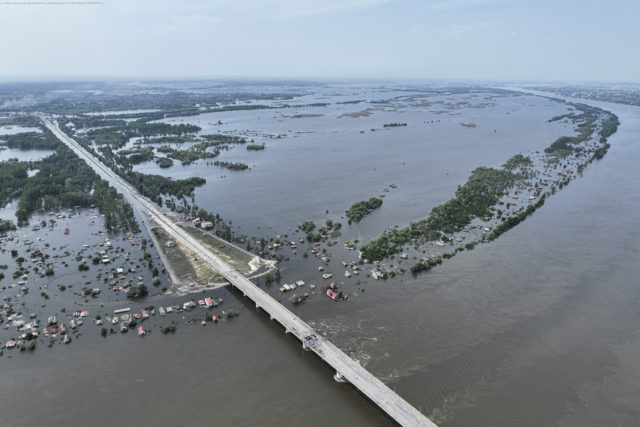Array
The destruction of the Kakhovka Dam was a fast-moving disaster that is swiftly evolving into a long-term environmental catastrophe affecting drinking water, food supplies and ecosystems reaching into the Black Sea.
The short-term dangers can be seen from outer space — tens of thousands of parcels of land flooded, and more to come. Experts say the long-term consequences will be generational.
For every flooded home and farm, there are fields upon fields of newly planted grains, fruits and vegetables whose irrigation canals are drying up.
Thousands of fish were left gasping on mud flats.
Fledgling water birds lost their nests and their food sources.
Countless trees and plants were drowned.
If water is life, then the draining of the Kakhovka reservoir creates an uncertain future for the region of southern Ukraine that was an arid plain until the damming of the Dnieper River 70 years ago.
The Kakhovka Dam was the last in a system of six Soviet-era dams on the river, which flows from Belarus to the Black Sea.
Then the Dnieper became part of the front line after Russia’s invasion last year.
“All this territory formed its own particular ecosystem, with the reservoir included,” said Kateryna Filiuta, an expert in protected habitats for the Ukraine Nature Conservation Group.The short term
Ihor Medunov is very much part of that ecosystem.
His work as a hunting and fishing guide effectively ended with the start of the war, but he stayed on his little island compound with his four dogs because it seemed safer than the alternative.
Still, for months the knowledge that Russian forces controlled the dam downstream worried him.
The six dams along the Dnieper were designed to operate in tandem, adjusting to each other as water levels rose and fell from one season to the next.
When Russian forces seized the Kakhovka Dam, the whole system fell into neglect.
Whether deliberately or simply carelessly, the Russian forces allowed water levels to fluctuate uncontrollably.
They dropped dangerously low in winter and then rose to historic peaks when snowmelt and spring rains pooled in the reservoir.
Until Monday, the waters were lapping into Medunov’s living room.
Start
United States
USA — Events Ukraine’s dam collapse is both a fast-moving disaster and a slow-moving ecological...






